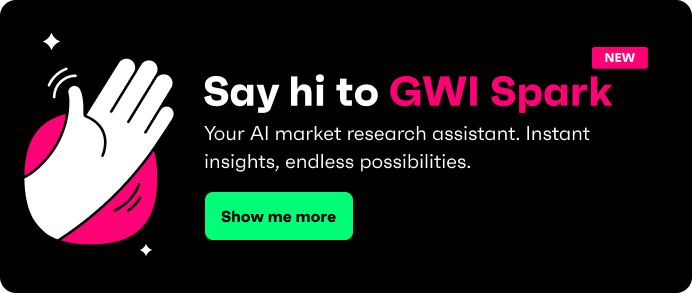
Synthetic data is one AI topic that can be slightly on the thornier side. As companies scramble to meet growing data demands, artificial data offers a scalable, rapid solution - one that can even help sidestep certain regulations.
With the challenges of privacy and compliance making headlines, using synthetic data can seem like a silver bullet. But while it opens doors, it also raises big questions. How far can you really trust artificial data? When is real-world insight non-negotiable? Let’s dig into what it means, how it works, and why it’s such a hot topic in the machine learning landscape.
Why synthetic data matters
The buzz around synthetic data is growing for good reason. Data scarcity is a real issue, creating bottlenecks in industries where privacy rules are tightening fast. And AI models don’t just want data - they want tons of the stuff. Collecting high-quality, diverse, privacy-safe data is getting harder by the day. This is where synthetic data comes in, a way to generate artificial datasets that mimic the patterns of real data without exposing personal information.
Synthetic data also offers scale. You can generate as much as you need, as often as you need it, and potentially more easily.
For businesses, the payoff is clear. Faster innovation cycles, lower data costs, and a serious reduction in compliance risks. But as with any tool, or AI tool, understanding the fine print is what separates a smart move from a misstep. Time to unpick what it all means.
What is synthetic data?
Synthetic data is artificially generated information that mirrors the structure and patterns of real-world data.
It steps in when privacy, speed, or scale make live data hard to use, letting teams model scenarios and test ideas that real datasets can’t cover. In practice, the best results come from blending synthetic outputs with trusted first-party data, giving model owners the accuracy they need while keeping sensitive details safe. It’s not a replacement for reality, but a powerful sidekick that unlocks smarter decisions at pace.
It’s built using smart algorithms like Generative Adversarial Networks (GANs) and Variational Autoencoders (VAEs). These tools study real datasets, learn their ins and outs, and then create new data points that look and behave like the originals, without being direct copies.
Synthetic data comes in many forms. There’s tabular data for databases and spreadsheets. Image data for computer vision. Text data for language processing. Time-series data for forecasting trends… The list goes on.
For synthetic data to deliver, it has to nail two things: realism and statistical integrity. Get those wrong, and your models risk falling apart in the real world.
How synthetic data generation works
Now we’re getting into the real science. To get synthetic data made, you need a solid foundation - the real data that trains your generative model. Then, the algorithm (often a GAN or something similar) digs into that dataset, learning the underlying patterns and relationships.
Once trained, it starts generating synthetic data that mirrors the structure and diversity of the original. But it’s not time to rest on your laurels just yet. Next up is rigorous validation, an absolutely crucial part of the process to check that your synthetic set holds up, both statistically and functionally.
Platforms like MOSTLY AI, Synthesis AI, and Datagen are way out front, offering plug-and-play tools that slot into your AI pipelines with little fuss. These tools help teams pump out synthetic data fast, making it easier to keep AI projects moving at pace.
Benefits of synthetic data for AI and machine learning
All sounds pretty good, right? Synthetic data is scalable and budget-friendly. You don’t have to wait months to gather fresh datasets, as it’s ready when you are.
It’s a privacy win too. Because synthetic data isn’t tied to real people, you can train and test models without worrying about violating privacy laws. Plus, it’s great for balancing datasets. You can fill in gaps, boost underrepresented categories, and create richer, more diverse training material.
The benefits here shine. Synthetic data helps businesses innovate faster and smarter, without getting bogged down in red tape.
Use cases across industries
Synthetic data is being used across many industries already. Self-driving car developers rely on it to simulate critical road scenarios whilst keeping people safe. Healthcare researchers use synthetic patient data to train diagnostic models, keeping patient info private.
Banks and fintech companies generate synthetic transaction data to sharpen their fraud detection tools. Retailers and marketers build synthetic customer profiles to fine-tune personalization engines. And in robotics, synthetic environments help machines practice tasks before they hit the real world.
Whatever the sector, synthetic data is helping teams test boldly, safely, and at scale.
Limitations and drawbacks of synthetic data
All this to say, synthetic data does have its blind spots. Sure, it can mimic patterns, but it often misses the deeper nuance of real human behavior. AI models trained solely on synthetic data risk missing those messy, unpredictable edge cases that crop up in real life.
Bias is another thing to put on the cons list. Synthetic datasets often inherit biases from their source material, and in some cases, they amplify them. Worse, these biases can be harder to spot because the data looks clean and controlled.
There’s also the matter of accountability. The more layers of artificiality you add, the tougher it gets to trace data lineage, especially in regulated industries.
The brilliant product and experience innovator Rachel Mercer put it best in a recent LinkedIn post. She noted, synthetic research is a brilliant tool, but it should never replace the richness of real-world, qualitative insight. Businesses that over-rely on synthetic data risk building products and services that feel disconnected from the people they’re meant to serve.
How real data from GWI strengthens synthetic data strategies
So, for synthetic data to really work, you do still need human data. This is where GWI steps in. Our global, consented consumer data keeps your AI grounded in reality. We don’t just provide stats, we capture real opinions, attitudes, and behaviors across over 50 markets.
For large language models (LLMs) especially, real data from real people is critical. It keeps your models aligned with how people actually speak, think, and interact, helping you catch bias early and ensure your AI isn’t just technically correct, but culturally relevant.
GWI data sharpens synthetic strategies too. Whether you’re validating personas or refining marketing simulations, GWI gives you a reliable benchmark to keep things on track.
When real data is irreplaceable
Sometimes synthetic data just isn’t enough. When you need to understand what people care about, what motivates them, or how they feel about a brand or product, nothing beats real data.
Synthetic data can replicate behaviors, but it can’t reveal the beliefs or emotions driving them. Sentiment analysis, brand tracking, cultural deep dives… these are areas where only direct input from real people will do.
GWI’s data shines here. Our data brings you authentic, real-time insights from consumers worldwide. When authenticity matters, real data is the only way to get the full picture.
Best practices for businesses
The bottom line? A smart synthetic data strategy is all about balance. Mix synthetic with real data to strengthen your models. Keep testing and validating to ensure synthetic datasets hold up in real-world scenarios. Know the limits of synthetic data, and don’t be afraid to lean into human insight where it counts.
Above all, stay human-focused. AI is powerful, but without real-world grounding, you’ll be losing all-important relevance.
The future of synthetic data
As time goes on, synthetic data is only getting more sophisticated. New tools are making it possible to generate multimodal datasets that blend text, images, and video. Entire synthetic populations are being created to stress-test systems on a widespread level.
At the same time, regulators are paying closer attention. The businesses that thrive will be the ones who balance innovation with compliance, staying agile as the landscape shifts.
Conclusion: Finding the right balance
As we’ve learned, synthetic data is a game changer - but it’s not a cure-all.
The strongest AI strategies use synthetic data mindfully. Combining it with rich, real-world insights - and knowing when only human data will do - is the way to work successfully with this tech. GWI’s global datasets keep your AI connected to the people who matter, keeping your strategy not just advanced, but authentic.




.webp?width=495&height=317&name=pink_thumb_graphs%20(1).webp)
.webp?width=495&height=317&name=pink_thumb_letter%20(2).webp)